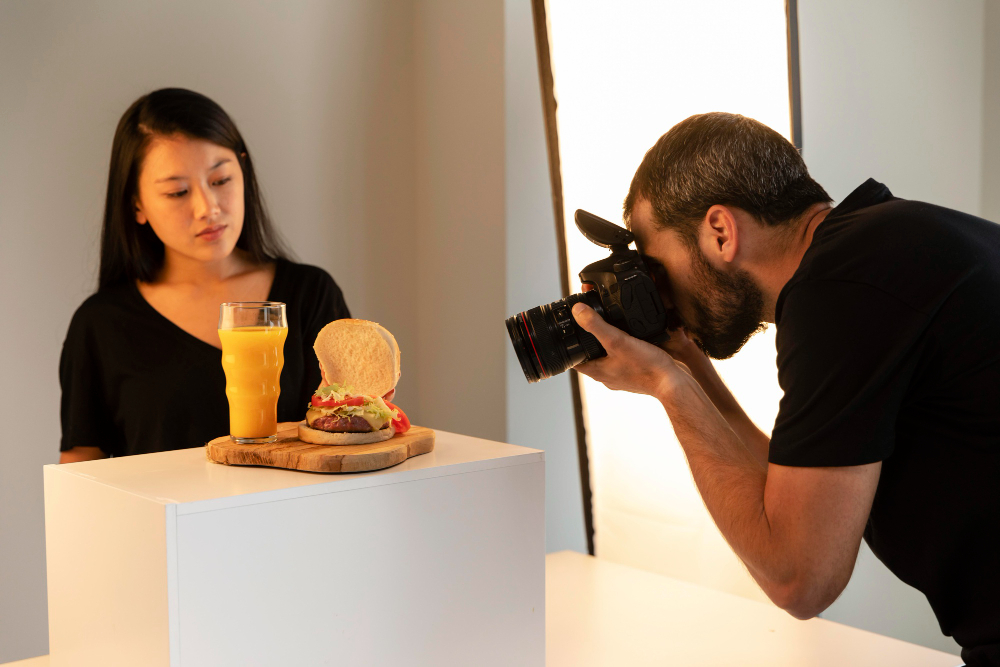Product Photography Tips: Capturing Your Brand’s Best Side
First impressions rule the digital world of today, particularly in terms of online product presentation for your business. Product photography is about telling a visual narrative that appeals to your audience and accentuates the quality and worth of your products, not only about taking a picture. Whether your firm is a big-scale e-commerce or a small business, knowing how to properly present the greatest aspect of your product will make all the difference in turning casual visitors into devoted consumers. This post will go over basic advice for product photography, the value of dealing with a professional product shot photographer, and how to prevent common mistakes visually marketing your items.
Why Product Shoots Matter
The good quality of a product picture might affect decisions on buying it. Studies reveal that consumers are far more inclined to trust and purchase goods using professional, well-lit, precisely rendered photographs. Good quality photography can:
- Build trust and credibility
- Enhance perceived product value
- Differentiate your brand from competitors
- Improve online sales and conversion rates
- Your marketing plan depends much on your product images, which may either highlight utility or capture minute details.
Qualities to Look for in a Product Shoot Photographer
Finding a product photographer requires looking for someone who not only knows the technical aspects of photography but also the subtleties of branding and narrative. Here are some salient features to seek for:
- Technical Expertise: Excellent photographers should be skilled in composition, lighting, and angles. They should be able to make your goods physically and symbolically brilliant.
- Brand Understanding: The photographer should be able to convey the core of your brand and intended market. This calls for a capacity to modify their approach to suit the aesthetic and message you wish to transmit.
- Attention to Detail: From the texture of cloth to the gloss on the surface of a product, the most minute elements count. Look for a photographer with sharp eyes and the ability to highlight these elements.
- Portfolio Versatility: Whether it’s simple, understated product pictures or more complex settings, a photographer with a varied portfolio shows their skill in managing several product kinds and creative concepts.
Types of Product Shoots
Product shoots can vary depending on the type of product and the intended purpose of the images. Here are some common styles:
- Studio Shots: Usually found in online retailers, studio shots are the conventional, clean backdrop images. With fewer outside distractions, they concentrate on clarity and precision.
- Lifestyle Shots: These pictures depict the product in use, therefore offering background and enabling buyers to see how well it fits into their life. Perfect for house goods, fashion, and personal care items.
- 360-Degree Photography: A rotating image called 360-degree photography lets consumers view the goods from all sides, therefore offering a more dynamic encounter.
- Macro Shots: For delicate or tiny items like jewelry or electronics, macro shots—used to capture close-up details—are ideal.
- Flat Lay Photography: A popular technique known as “flat lay photography” sees objects arranged flat and taken from above. Often employed in fashion and beauty shots, it’s fantastic for producing aesthetically pleasing compositions.
How to Collaborate Effectively with a Product Photographer
Good cooperation and communication define a successful product shot. Use these guidelines to maximise your results:
- Create a Detailed Brief: Write a detailed brief with important information on your brand, product, and shooting goal. Indicate any specific angles, colours, or details you like to emphasise.
- Provide Visual Inspiration: Share visual inspiration. Show instances of your preferred photography techniques. This may come from other businesses, mood boards, or even past picture sessions you worked on.
- Be Clear About the Target Audience: The photographer must be clear about the target audience and the feelings or behaviours you wish to arouse from them while seeing these pictures.
- Offer Constructive Feedback: Provide comments all through the process to make sure the last photographs reflect your vision. Share specifically what works and what doesn’t.
- Plan for Post-Processing: Talk about retouching requirements and editing expectations with your photographer. Usually, a polished final image calls for some degree of post-production.
Common Mistakes to Avoid in Product Photography
- Poor Lighting: Lighting can either make or ruin a product shot. Steer clear of underexposed photographs obscuring features and strong shadows. Though professional lighting configurations guarantee uniformity, natural light may be very wonderful.
- Over-Editing: While editing can improve images, over-processing may render them unrealistic or off-putting. Minimise post-processing to preserve authenticity.
- Inconsistent Styles: Different lighting, angles, or backdrops in your product photographs might throw off the brand’s cohesiveness. Over your product range, consistency is vital.
- Ignoring the Background: A messy or distracting background might divert attention from the good or service. Neutral, clean backdrops let things shine out.
- Neglecting Multiple Angles: Consumers want to view every aspect prior to making a purchase. Show customers the whole picture by capturing your good from several perspectives.
The Benefits of Hiring a Professional Photographer vs. DIY Product Shoots
While DIY product photography can save money in the short term, the investment in a professional product shoot photographer often leads to higher-quality images and better overall results. Here’s why hiring a pro is worth considering:
- Professional Equipment: Professional photographers employ high-end cameras, lighting, and editing tools with great impact on image quality.
- Experienced Eye: Pros know the ideal compositions, lighting configurations, and perspectives to highlight your goods.
- Time Efficiency: Professional photographers can rapidly set up, capture, and edit, thereby saving you time and minimizing trial-and- error aggravation.
- Brand Consistency: Professionals make sure your photos are polished, consistent, and fit the character of your brand so that consumers may have a unified experience.
With some experience, do-it-yourself projects may be a great choice for those just starting out or working on a tight budget. But when your company expands, hiring a qualified product photographer may improve the visual attractiveness of your brand and eventually your profit line.
Conclusion
One very effective instrument that may greatly affect the online visibility and sales of your company is product photography. Understanding the several kinds of product shots, selecting the correct product shoot photographer, and avoiding typical errors can help you to produce photographs that not only represent the quality of your items but also appeal to your target market. Whether you want to work with a professional or do your own, the most important thing is to give consistency and quality top priority so that the best part of your business may be really captured.


